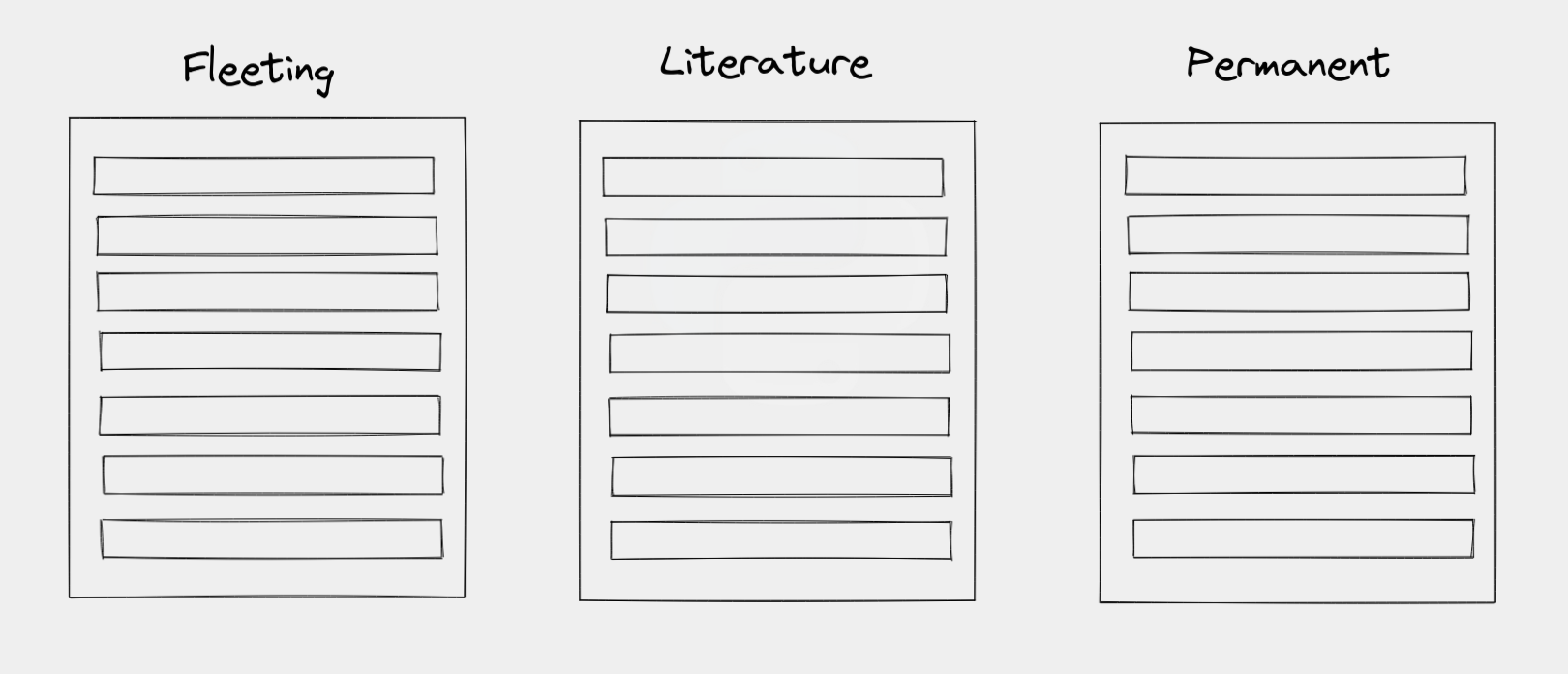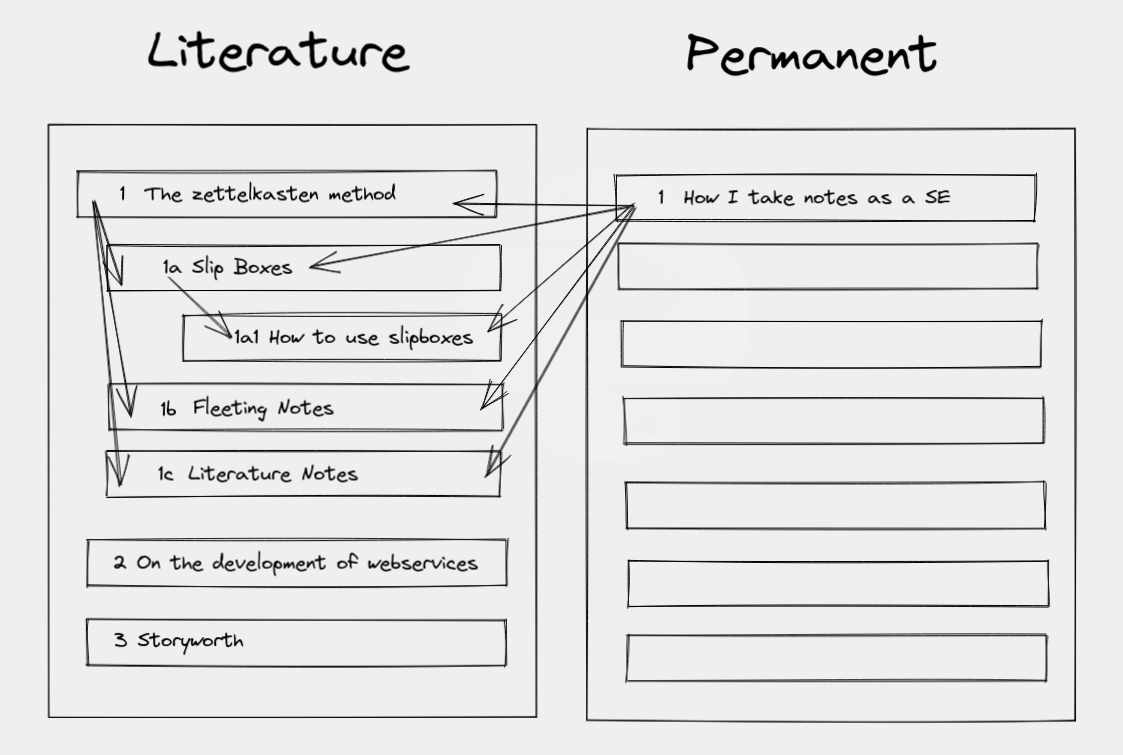How I use Zettelkasten
Recently, I've read the book How to take smart notes, and made a review on it. If you are not sure about the terms I'll use in this post, I recommend going over the review and my notes on the topic, this will help you out understanding concepts like:
Those are the core concepts for me, if you can get a grasp of this 5, you can start implementing zettelkasten.
A LOT of tutorials out there
The first thing for me, was to figure it out how to use properly the types of notes, when I first started researching the method, I found a lot, I mean, a LOT of tutorials on Roam, Notion and Obsidian. But it was quite strange, because it looked like an implementation of each person within that specific software. A friend of mine took his notes on vim, and he stored all his notes as markdown files (like this one, this is a simple .md file). The simplicity really appealed to me. So I took the time to read How to take smart notes. And it really helped to get a grasp of the simple things.
How I implemented it
The first thing I did was to simulate a slip box for each of those types. How did I do it? I just created a folder. And in each folder, I created the notes.
Now, for the line of thought. I implemented something like what Niklas Luhmann used.
Let's assume you take your first literature note, "The Zettelkasten Method" taken from the book "How to take smart notes". Great, now you can add to your literature slip box (or folder in my case). Now let's assume you took a note on slip boxes, does it relate to something you have on your slip box? Yeah, so you place behind "The Zettelkasten Method" note. In my case, I numbered 1, and 1a for the slip box, so later on I know the order of the notes.
Now you are reading about microservices, and want to start another line of thought, it's not related to "The Zettelkasten Method", or the "Slip box" note, so you place behind the last one, in my case, I place a number 2 in it. If now you read a blog post on how to use slip boxes, you place this note behind the slip box one, and name it "1a1", you could also use, 1 - 1.1 - 1.1.1, and so on. You get the idea.
But the really powerful thing about The Zettelkasten Method. Is the linking part of it, let's assume you want to write a post on how you use slip boxes for engineering (something like this post). Now you have a bunch of notes that you can link to, as I did in this post.
And the really cool thing is that you gather ideas, and as you go through your notes consistently to find to each node do you want to link this new fleeting/literature /permanent note. You are always gathering information and remembering things. It's a really nice feel, to take 30min or 1hour of your time each day to go over your notes, find new links, find new questions, for me, that's the most valuable thing zettelkasten brought to my workflow.
I also go over this in a more hand on approach in my 1 year box set of tutorials.



